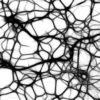Our minds make connections. They say it’s the basis of our learning anything at all. We don’t have to deliberately choose what is connected to what, and honestly that’s probably a very good thing. People would neglect such a chore.
They have found that the human hippocampus, the part of the brain responsible for memory, also has what they call grid cells which are responsible for tracking where we are in location to any other familiar location. The various systems of the brain, as a rule, do not serve only a singular function. The grid cells I mentioned not only track where you are in relation to a familiar starting place, but they also track the relationship between one memory trace and another. So automatically your brain not only makes connections but also marks them for contrast.
Something I once heard second hand feels more distant than something I once ate, further removed from your normal perceptual stomping grounds. This is why people have poor recall of paranormal experiences. When the brain tries to assimilate what it sensed, the traces are too complex and obscure so they tend to register as a metaphor more than a direct experience, and often even the paranormal metaphor feels second hand like it happened to somebody else.
Now with memory engineering, as I said earlier, the brain makes connections without any conscious effort on our part. This is the basis of how we learn according to neuroscience, but with memory engineering they are discovering a range of interesting things. Connections can be blocked, removed. That is at the core of today’s topic. We live with a wide range of connections in our mind, mostly not deliberately managed or tested, and thus, as we go about our day to day activities, we sometimes experience what seem like totally absurd associations. Is this not so? Meaning we imagine something like a piece of food resembles some awful filth when any such resemblance is often superficial if even valid at all. Really, the physical comparison isn’t there.
Yes, and you hate it when someone points it out. Yes.
Now our brains make these connections constantly. Every new person we meet is compared against our experience of any other person we have ever met. This is the basis of our pattern recognition. It’s how you recognize any familiar face, and the degree of comparison does have a perceptual weight to it giving some connections a higher priority and greater credibility than others. So you have a vast chain of connections, things compared and contrasted to other things, and they are freely associated.
Ever notice how rare it is to dream of a familiar person?
True. But you dream of people, generic figures, all the time. Do you not?
I dream of specific people though sometimes it might be three in one.
There are people in my dreams, but not familiar to me in the dream. Only afterwards do I realize it was someone I know.
These figures, even when they have familiar roots, are the product of your brains need to process all the sensory experience you register in a day, and that is a great deal of data. So it first reduces the number of figures. You won’t dream of every man you saw, or every woman. You will dream of a blond man, or an old woman, whatever figures had the greatest weight of connection. If one of those figures was a little child, but you saw only one such child in that day, the odds are you would not dream of a child.
Not only do we weight experience for frequency of occurrence, we also weigh it for emotional significance, and we tend to use our most familiar faces to label things emotionally. For me, dreaming of a tall dark skinned Caucasian man is a label of concern, as would be hearing authoritarian voices. This means I experienced significant stress that day.
Now all these connections take energy, like lines of code in a computer program, so as much as many people protest that they find significance in the whole world and everyone in it, this is impossible. Even the Buddha experienced this. This is why he named his son Fetter.
What we can do, instead of trying to get and keep and value all of the connections in our mind equally, is direct our attention toward the source code of our consciousness. We have a great deal of fringe content in our brains, and it’s the fringe content that we are most often conscious of. The core content tends to function beneath the surface, which is why a new acquaintance can be immediately labelled with a negative emotional impression, and we will say we don’t know why.
This can be changed of course, and our energy recovered and used much more effectively.
Your thoughts are welcome. Be well friends.
Travis Saunders
Dragon Intuitive
~science,mysticism,spirituality~



Leave a Reply